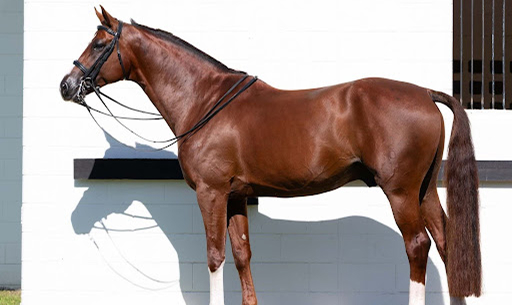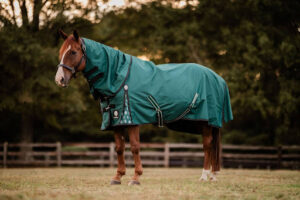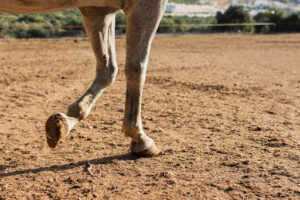The Complete Guide to Hoof Boot Fitting (and Common Mistakes to Avoid)
Are you struggling to find the perfect fit for your horse’s hoof boots? You’re not alone. Many horse owners find themselves frustrated when boots twist, rub, or simply fall off during rides. The good news is that achieving that perfect fit isn’t rocket science – it just requires attention to detail and understanding a few […]

Are you struggling to find the perfect fit for your horse’s hoof boots? You’re not alone. Many horse owners find themselves frustrated when boots twist, rub, or simply fall off during rides. The good news is that achieving that perfect fit isn’t rocket science – it just requires attention to detail and understanding a few key principles.
Why Proper Hoof Boot Fitting Matters
Before diving into the nitty-gritty of hoof boot fitting, let’s talk about why it matters so much. Properly fitted hoof boots protect your horse’s feet while allowing natural movement and comfort. They can make the difference between enjoyable trail rides and constant stops to readjust loose boots or treat painful rubs.
Think of hoof boots like your own shoes – when they fit right, you hardly notice them. When they don’t, every step becomes a reminder of your poor choice. Your horse feels the same way!
Getting Started: Preparation for Perfect Hoof Boot Fitting
The foundation of successful hoof boot fitting starts before you even pick up a measuring tape. Here’s where many horse owners go wrong right from the start:
Timing Your Measurements
Always measure your horse’s hooves immediately after a fresh trim. This represents the smallest the hoof will be in its trim cycle, giving you the most accurate baseline for fitting. If you measure weeks after a trim, you’ll likely end up with boots that would be too loose. Conversely, a boot that fits snugly right after a trim will probably become too tight as the hoof grows over six weeks.
To get accurate measurements, start by measuring the length of the hoof from the buttress line to the toe, making sure not to include the heel bulbs. Then, measure the width by finding the widest point on each side of the hoof and measuring across.
If your horse has underrun heels or low heel bulbs, you may need to size up in length and consider choosing a slim size for a better fit. Additionally, if the hooves have been freshly trimmed, it’s recommended to add about 4mm (1/8 inch) to the length measurement to accommodate for natural hoof growth.
For glue-on jogging shoes, a fresh trim is especially important. Make sure the hooves are trimmed just before measuring or applying the 24/7 jogging shoe to ensure the best fit and durability. If you’re deciding between two sizes, opt for the tighter one, as the shoe is designed to stretch and conform to the hoof shape over time.
Preparing the Hoof
Before measuring, make sure the hoof is clean and free of debris. Brush away any dirt and define the hoof’s natural edges clearly. This helps you identify the true boundaries of the hoof when measuring.
Your Complete Hoof Boots Size Guide
Measuring correctly is perhaps the most crucial step in hoof boot fitting. Here’s how to nail it:
Length Measurement
Place your measuring device at the toe’s tip and measure straight back to the buttress line of the heel – but don’t include those soft heel bulbs! This is a common mistake that leads to oversized boots. The buttress line marks where the hard part of the hoof ends, creating a natural breaking point that’s perfect for boot placement.
Width Measurement
Find the widest point of the hoof – usually across the middle – and measure straight across. Keep your measuring device level and snug against the hoof wall.
Shape Considerations
Notice the relationship between the length and width measurements. Is your horse’s hoof nearly as wide as it is long? That’s a round hoof. Is it significantly longer than it is wide? That’s more oval. This shape factor influences which boot styles will work best.
Selecting the Right Boot Style for Your Horse
Not all hoof boots are created equal, and this is where understanding your horse’s unique hoof shape pays dividends in successful hoof boot fitting.
Round vs. Oval Hooves
Horses with round hooves often do better with certain brands, while those with more oval hooves might need a different style entirely. If your horse’s hoof width is nearly equal to its length, look for boots designed for round hooves. If the width is significantly less than the length, seek out styles designed for oval hooves.
Choosing the right shape ensures a better fit and overall horse hoof protection during rides and turnout.
Front vs. Hind Hooves
Don’t assume your horse’s front and hind hooves are identical – they rarely are! Measure each hoof individually and be prepared to purchase different sizes if necessary. Yes, this might mean a bigger investment upfront, but it saves money in the long run by preventing the purchase of ill-fitting boots that cause problems or get lost on the trail.
The Perfect Fit: How To Fit Hoof Boots
Once you’ve selected boots based on your measurements, how do you know if they truly fit well? Here are the key indicators:
The Shell Fit
The boot shell should fit snugly around the hoof wall with minimal gapping. The hoof should sit fully within the boot sole, with the toe seated into the front of the boot. If you notice significant air gaps between the hoof wall and boot, especially at the front or sides, the fit isn’t optimal.
The Heel Factor
Proper heel fit is crucial for successful hoof boot fitting. The heel bulbs should protrude comfortably through the back of the boot without being pinched. You should be able to slide a finger under each heel strap without pressing on the bulbs.
The Wiggle Test
Once the boot is on, give it a gentle twist. A well-fitted boot will move with the hoof rather than rotating independently. Some minimal movement is normal, especially when the hoof is lifted, but excessive twisting indicates a poor fit.
Common Hoof Boot Fitting Mistakes to Avoid
Even experienced horse owners make these hoof boot fitting errors:
Choosing Boots That Are Too Small
It’s tempting to opt for a tight fit, thinking it will prevent lost boots, but this approach causes rubbing, discomfort, and potentially even hoof damage. Boots that require excessive force to put on are likely too small.
Ignoring Individual Hoof Differences
Using the same size for all four hooves without measuring each one is a shortcut to problems. Take the time to measure and fit each hoof individually.
Failing to Account for Growth
Hooves grow! A boot that fits perfectly right after a trim may become uncomfortably tight three weeks later. Plan for this growth cycle when selecting your boot size.
Maintaining the Perfect Fit
Hoof boot fitting isn’t a one-and-done process. Here’s how to ensure continued success:
Regular Reassessment
Check your horse’s boot fit after each trim and adjust straps as needed. Be prepared to replace boots as your horse’s hooves change shape over time.
Proper Care and Cleaning
Clean boots after each use to remove dirt and debris that could affect fit or cause rubbing. Allow boots to dry thoroughly between uses to maintain their shape and prevent material breakdown.
Troubleshooting Hoof Boot Fitting Issues
If you’re experiencing problems despite your best efforts at proper hoof boot fitting, consider these solutions:
For Boots That Twist
If boots twist during movement, they may be too loose or the wrong shape for your horse’s hoof. Try tightening straps first, but be prepared to try a different boot style if problems persist.
For Rubbing Issues
Rubbing often indicates pressure points from improper fit. Check for areas where the boot might be too tight or where movement causes friction. Sometimes adding protective wraps around the pastern can help during the breaking-in period.







